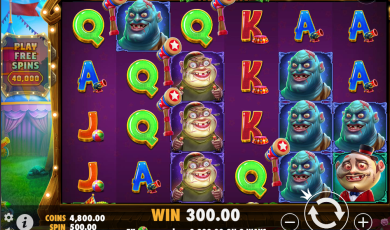Four licensed casinos in New York hadn’t generated the level of financial benefits NY lawmakers anticipated they would when they authorized them several years ago.
New York Comptroller Thomas DiNapoli and his office issued a new report reviewing 2017 to 2022 operations at:
- del Lago Resort and Casino in Tyre
- Rivers Casino and Resort in Schenectady
- Resorts World Catskills in Thompson
- Tioga Downs Casino in Nichols
All casinos fell short of the projected gross revenue on which local taxes are levied, while their revenues and tax contributions continued to lag three years later.
Apart from showing a loss trend from casinos, the OSC’s report also warns communities not to rely too heavily on them to make up revenue.
In 2013 New York voters approved a constitutional amendment authorizing up to seven commercial casinos in the state. In 2015 and 2016, the NY Gaming Facility Location Board awarded the first four licenses to casinos in so-called upstate communities.
The board planned seven years between awarding licenses to the remaining three downstate casinos and issued a request for applications in January 2023. That’s why the OSC is now taking the opportunity to examine the impact of the four existing casinos on local government revenues.
New York Comptroller Office’s gambling study highlights
In 2020, DiNapoli’s office compared the casinos’ original 2019 projections to the actual tax revenue collected. The OSC found all four casinos fell well short of the projected gross revenues on which local taxes are levied. DiNapoli said that revenues and tax contributions continue to lag behind expectations three years later, reaching only 50-60% of predictions.
None of the four New York casinos receiving licenses in 2015 and 2016 met their 2019 expected gaming tax distributions 2019. The only exception is Tioga Downs in Southern Tier.
These are the other report highlights:
- Although gross gaming revenue was relatively strong in 2022, state policy measures reduced local collections from in-house sports betting and slot & electronic table games
- Gaming tax distributions to local governments from the four casinos amounted to nearly $176 million from 2017 to 2022
- Broome County received the most gaming tax revenue of $4 million, although it did not host a casino
- Gaming taxes had a particularly large effect on the finances of the three smaller host towns, which were able to reduce real property taxes significantly
- OSC audits of those towns also highlight issues for all local governments
The OSC report stated that all four casinos’ gross gaming revenues exceeded pre-pandemic levels in 2022. But the increased revenues didn’t produce greater local gaming taxes, as state amendments to New York’s gaming law allowed casinos to keep a larger percentage of their gross revenue.
According to an article by Spectrum News 1, DiNapoli said:
“Casinos are not a magic fix that will solve local fiscal challenges. While casinos have generated local gaming tax revenue, the impacts vary for the communities that receive such revenues.
It’s my hope that this report gives state and local officials a clearer perspective that can help potential host communities avoid the pitfalls that arise with misguided expectations about the public benefits of casinos. They are not a sure bet.”
Only three smaller towns in New York gained financial benefits from casinos
The good news is casino gaming has helped three New York towns from a financial standpoint:
- Nichols
- Tyre
- Thompson
In these towns, which are hosting state-sanctioned casinos, gaming tax revenue made up 30% to 60% of total revenue. As DiNapoli said, that amount allowed those communities to cut property taxes dramatically.
As for the larger host city of Schenectady and the said host counties, gaming tax accounted for just 1-3% of their total revenue.
NY state taxes the casinos based on their gross gaming revenue or the total amount remaining after all winning bets are paid and certain promotional credits deducted. The state keeps 80% of the gaming taxes, distributing the remaining 20% to local governments in the region surrounding the casinos. From that 20% local share, host communities receive half of which 5% goes to the host town or city and 5% to the host county.
A bill to reduce Tioga Downs’ Slot & ETG tax rate to 30% is waiting for Gov. Kathy Hochul’s approval.
DiNapoli’s office emphasized that the tax cuts reduced collections by $41.9 million in 2022. That included $8.4 million, which would have gone to local governments.








